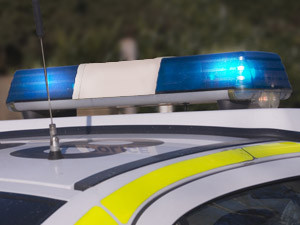
As the City of Cape Town highlights improved response times to gun incidents in Hanover Park thanks to its gunshot-detecting pilot programme, integration of technology is playing an increasingly pivotal role in SA's war against crime.
Police ministry spokesperson Musa Zondi notes technological advancements over the past few decades cannot be ignored in the fight against crime. Part of the South African Police Service's strategy aims to improve efficiency by integrating existing intra-departmental IT systems to better manage information on record, he notes.
On a national scale, SAPS is focused on improved communication between officers as well as better data management. The SAPS recently inked a three-year deal with Emcom wireless, to upgrade its radio network equipment across the country. Stefan Skarabis, CTO at Emcom, says the company will supply 4-13GHz microwave radios to enable inter-linking of the various radio repeater sites spread across SA.
Skarabis said the new equipment runs on a "secure internal network" that allows remote stations to access information management services "in order to share digital information as well as to communicate and co-ordinate police operations".
SAPS aims to create the following:
* Single, coordinated management of continuum of criminal justice and performance.
* A system to be developed to ensure records and data on corruption crimes across the criminal justice system (CJS).
* Developing a database of victims across the CJS.
* Developing a database that enables convictions and sentences related to identity theft.
Improved responses
Meanwhile, Cape Town is running the second phase of ShotSpotter - a system that detects firearm activity, pinpoints its origin and then alerts police. According to the city's mayoral committee member for safety and security JP Smith, the system has resulted in a marked improvement in its response to violence in the targeted area.
Smith said police are now responding to every gunshot as opposed to one in five or one in eight, which was the usual response rate before the programme started. "This has had the effect of suppressing the amount of gunfire and has allowed us to confiscate illegal firearms, arrest suspects with outstanding warrants, find illegal drugs, and gather useful crime intelligence."
In the pilot's first phase, between 17 August and 15 November, the system recorded 344 incidents, with a total of 1 106 shots fired. But Smith notes it is important to temper public expectation, as ShotSpotter was "never meant to be a magic wand that would make all available resources fall into place and the problem would be solved". Instead, he adds, it is an enabler to a much bigger strategy in collaborating with the police to combat gun and gang violence.
Private sector input
The private sector also aims to play a bigger role in the fight against crime, with Vodacom recently unveiling plans to push its "next-generation policing" solution in the local safety and security sector.
The system connects cars to the Internet and equips them with mounted cameras that send live video feeds to a centralised control room. It also integrates smartphones and tablets that can send alerts and record evidence in real-time, as well as a smartwatch and a lightweight vest that record vital signs data to relay health and wellness information to a remote command centre.
Vuyani Jarana, chief officer for business development at Vodacom, notes the company is pushing for its system to be adopted by the SAPS, while it remains open to input and suggestions. "We want the police to get a proper feel of what the system can do. We will be setting up a client-specific cluster to see what their needs are in terms of customisation."
Share